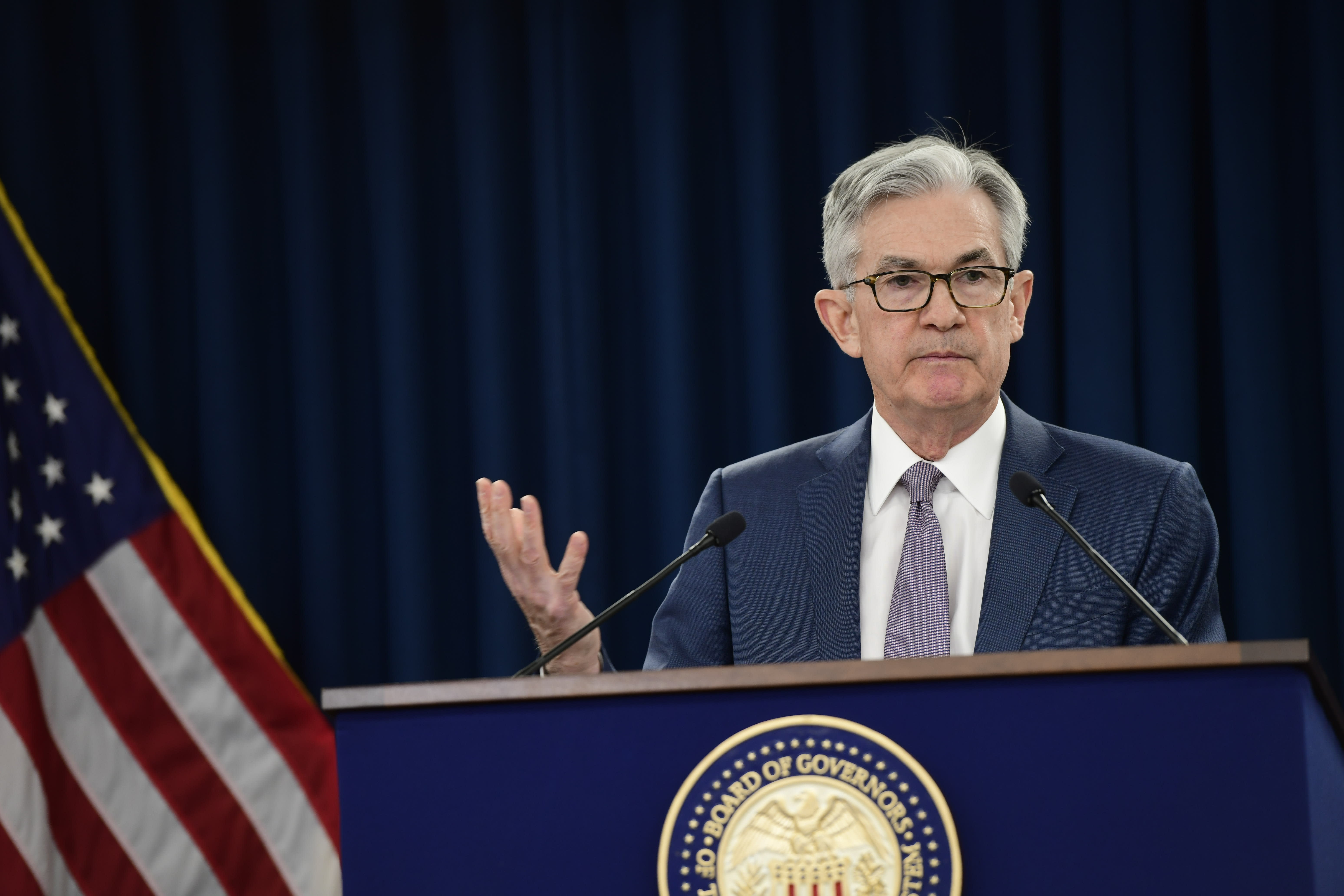Getty Images
Now that Federal Reserve officials have sent a clear message on their desire for higher inflation, the tough part is convincing the world that they can pull it off.
For the past decade, the Fed has struggled to get inflation up to the 2% target it sees as consistent with a growing economy and that provides policymakers with enough policy room for times of economic stress.
In a historic shift Thursday, Chairman Jerome Powell announced that policymakers would allow inflation to run modestly higher for periods of time, rather than employ the past practice of using preemptive rate hikes to control price pressures. The new practice is known as “average inflation targeting.”
While markets rallied on the sentiment that the approach would keep short-term rates anchored near zero well into the future, there also was plenty of skepticism that the Fed would be able to reach its goal.
“It takes us down a dangerous road, because it’s clear that deflation is the dominant tendency and they can’t change that,” said Christopher Whalen, an investment banker and head of Whalen Investment Advisory. “They mistakenly believe that the tools that have can allow them to manipulate inflation expectation, and I think they’re wrong.”
Inflation persistently has run a bit below the 2% target for most of the period since the Great Recession, and has fallen closer to 1% during the downturn associated with the Covid-19 pandemic.
Well before this year’s recession even hit, Fed officials had been grappling with low inflation expectations, which they perceive as problematic because they tend to feed off themselves and create policy problems. Thursday’s declaration by Powell represented not only the chairman’s feelings but also was endorsed unanimously by the policymaking Federal Open Market Committee.
Codifying the goals took the campaign to another level and establishes a firm policy that will make the interest-rate setting part of the FOMC’s job almost automatic until inflation rises and unemployment falls well below its current 10.2%.
More action needed
“Putting something in writing after a unanimous vote does mean something,” said Peter Ireland, a Boston University economics professor and member of the Shadow Open Market Committee, a Fed watchdog group of economists and academics. “It means the committee agrees. Not only do they agree, but it’s down on paper on the Fed’s website. There can’t be any question about how to interpret this.”
But while the Fed’s intentions may be clear, its ability to get past 2% inflation will require additional action.
The investing public will be watching coming FOMC meetings for more specific moves to buttress the inflation commitment. Among them: more specific forward guidance on what parameters would have to be met before the Fed would move on rates.
Powell’s statement indicated that at the least the committee won’t set a specific unemployment target. Dallas Fed President Robert Kaplan told CNBC’s Steve Liesman in an interview Thursday that he’d be looking for inflation in the 2.25%-2.5% range before acting, but it’s unclear where the other officials stand.
“If we get to next spring and it looks like we’ve put all this in the past, at that point I do think we would begin to see the Fed formulate a more detailed plan for forward guidance as to when the asset purchases start to wind down and when liftoff may begin,” Ireland said. “For now, the problem is there’s so much uncertainty, it’s very difficult to enumerate all the scenarios and how the Fed would respond contingent to every possible outcome.”
Markets, though, may begin to look for something more immediate, and the asset purchase program could play a key role.
The Fed accelerated its bond buying during the pandemic, expanding its holdings of Treasurys and mortgage-backed securities by $2.4 trillion over the past five months. But officials have stressed that the purchases were aimed more at market functioning than the traditional QE, or quantitative easing, that was deployed during the financial crisis to drive down long-term rates, revive the housing market and generate a wealth effect through the economy.
FOMC officials at the July meeting suggested changing the communication strategy to emphasize more traditional QE goals.
Krishna Guha, head of central bank strategy for Evercore ISI, expects the Fed, possibly as soon as September, to commit to keeping rates low until inflation is at least 2%, and to asset purchases of at least $120 billion a month “until the Committee judges that it has made very substantial progress towards these goals.”
“We cannot underline too much the importance of the FOMC walking the talk and taking additional policy actions that give concrete expression to the strategic principles set out in the new framework,” Guha said in a note.
Fed officials have faced criticism of overstepping their congressional mandate by taking steps that also include multiple lending and liquidity programs used under emergency powers the central bank has from Congress.
However, they’ve defended their actions as appropriate for the times, with the new inflation mandate part of an ongoing effort to bring the economy back to the strength it saw before the pandemic hit.
“The Fed needs to do what it’s doing,” said Jack Janasiewicz, portfolio strategist at Natixis Investment Managers. “The idea of overstepping its bounds, that’s great from a conceptual standpoint. Had the Fed not done what it did, we could be looking at something that’s not a recession but a depression.”
